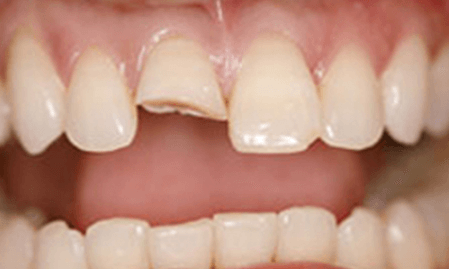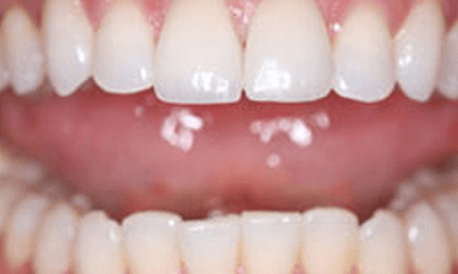A crown, also referred to as a cap, is a dental prosthesis used to fix badly damaged teeth. When a crown is placed on top of a tooth, it protects the entire portion of the tooth above the gum line. There are plenty of implications for using crowns in dentistry. Crowns restore broken teeth back to their original form. They protect teeth against cavity bugs and traumatic bite forces. A well-designed crown could last for decades, sometimes a lifetime. The crown protects your tooth from further damage and restores the original condition of the tooth.
When do I need a crown on my tooth?
Generally speaking, crowns are implicated whenever a filling is no longer sufficient to protect your tooth from further damage. Small cavities and minor cracks can usually be fixed by placing a filling on the tooth. However, teeth with more extensive damage can not be restored adequately with a filling. Placing a filling only leaves the tooth more susceptible to decay and damage. These teeth oftentimes require a crown to restore their function and aesthetics. Here are some common instances where your dentist may advise that you place a crown on your tooth:
Severely Damaged Teeth
Teeth with extensive damage typically require a crown instead of a filling. This includes teeth with a substantial fracture, deep crack, or an enormous cavity. Placing a filling on teeth with large defects leaves the tooth vulnerable to further damage. Tooth fillings do not protect your teeth against bite forces the same way that crowns do. Plus, large fillings do not properly seal off the tooth to prevent further bacteria contamination. Placing a crown on your tooth protects it against bite forces and recurring cavities. Failing to place a crown on a tooth that requires one will lead to further damage to the tooth. As a result, you're likely to end up needing a root canal treatment or possibly lose the tooth.
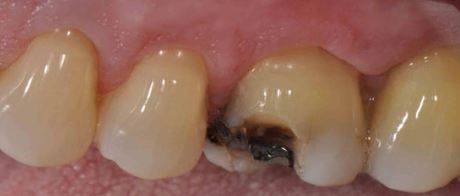
Teeth with large fractures, deep cracks, or enormous cavities, require a crown instead of a filling
Restoring Root Canal-Treated Teeth
Almost all teeth that receive a root canal will require a crown afterward. Root canal therapy removes a substantial amount of tooth structure. This significantly weakens the tooth. By placing a crown on the tooth, you strengthen and restore the tooth back to its original form. Without a crown, your tooth is likely to crack and split causing you to lose the root canal-treated tooth.
Cosmetic Crowns
Cosmetic crowns are primarily used to enhance the appearance of your front teeth. You can fix broken and discolored teeth, close small gaps, and protect chipped front teeth by placing a cosmetic crown on them. Cosmetic crowns are made from special types of ceramic with no metal in them. These crowns are made to closely resemble your natural tooth structure in terms of shape and color to maintain their natural appearance for many years to come.
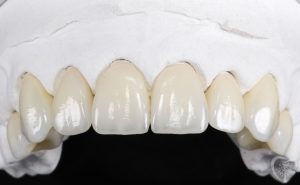
Cosmetic crowns are made from special ceramics that closely resemble natural tooth structure
Crowns for Baby Teeth
It's no surprise that even children occasionally require crowns for their baby teeth. Ever noticed kids who have metal teeth in their mouths? These are stainless steel crowns that are placed to protect and preserve infected baby teeth. When children lose their baby teeth early on, it leads to orthodontic issues. By placing crowns on these baby teeth, you save the teeth and preserve the space required for the adult teeth to erupt. Plus, your child can continue to talk and chew his or her meals comfortably without having to adapt to uncomfortable gaps.
What are dental crowns made from?
Back in the day, almost all crowns were made from some sort of gold alloy. Gold is a fantastic material since it is malleable and durable. However, with advancements in technology, you rarely come across gold crowns nowadays. Most modern crowns are made from porcelain-fused-to-metal or zirconia. Here's a closer look at the most commonly used material for make crowns for your teeth:
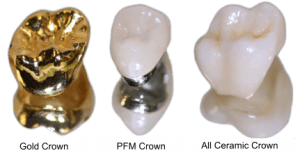
Crowns are made from gold, porcelain-fused-to-metal, or zirconia
Gold Alloy
Gold is malleable and durable which makes it an excellent choice for fabricating dental crowns. In fact, gold crowns are still to this day the most resilient of all crowns since they rarely break or fracture. Despite its many benefits, gold has fallen off in popularity among dentists and patients over the past few decades. This is in part due to the high cost of gold in addition to the patient’s preference for more natural-looking alternatives. People want white crowns that resemble their own tooth structure instead of shiny yellow teeth!
Porcelain-Fused-to-Metal (PFM) Crowns
Porcelain-fused-to-metal crowns, abbreviated as PFM, consist of an inner metal layer and an outer porcelain layer. The metal provides strength against chewing pressure and absorbs the bite forces. The porcelain gives your crown a natural-looking appearance that blends in with your smile. PFM crowns are still very popular as they are capable of restoring both front and back teeth with equally appealing results.
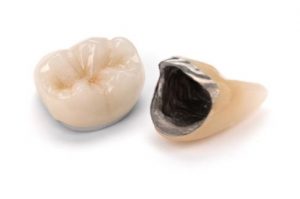
The metal in PFM crowns provides strength against chewing pressure while the porcelain gives the crown a natural-looking appearance
Zirconia Crowns
Zirconia crowns are very high-quality and extremely natural-looking. Since zirconia is strong enough to handle your bite forces on its own, there is no need for a metal substrate. As a result, zirconia crowns don't have any metal on the inside the way that PFM crowns do. This makes zirconia crowns more aesthetically appealing than their PFM counterpart. Zirconia crowns age well and maintain their appearance for many years to come.
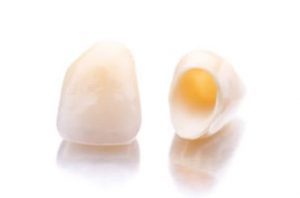
Zirconia crowns don't have any metal on the inside since the ceramic is strong enough to handle your bite forces
Which is the best type of crown?
Each type of crown has its own implications in dentistry. Gold crowns are not used as widely in the U.S. due to the high costs of gold as well as patients' desire for more natural-looking restorations. PFM and zirconia crowns are the most common options for restoring your damaged teeth. Zirconia crowns are starting to overtake PFM crowns as the material of choice among most dental practices. Here are some of the reasons why zirconia crowns are taking over:
More Attractive Appearance
Zirconia crowns look virtually indistinguishable from your natural teeth. While PFM crowns look similar to natural teeth, they are easier to distinguish when paying close attention. This is because PFM crowns have an inner metal layer that reflects light differently than natural teeth do. As a result, PFM crowns tend to look dimmer with a fake-looking appearance. Replacing your old PFM crowns with newer zirconia crowns will enhance your smile with a more natural and attractive appearance.
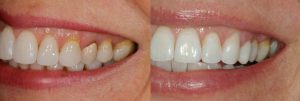
Replacing unattractive old crowns with newer zirconia crowns can enhance the appearance of your smile
Stronger Material
Zirconia crowns are about four to five times stronger than PFM crowns under bite forces. Since zirconia crowns are made from one piece, they are less likely to fracture when chewing on them. On the other hand, PFM crowns are much more likely to fracture over time and have the porcelain strip off from the metal substrate. If you're a heavy tooth grinder or have a poor bite relationship, you should highly consider upgrading to zirconia crowns over PFM crowns.
Better Long-Term Aesthetics
Zirconia crowns also age better and maintain their looks over time. PFM crowns are very beautiful when you first receive them. However, they are likely to change their appearance over time. As your gums recede, the inner metal layer of PFM crowns starts to become exposed. This creates a purplish-bluish line where the PFM crown meets the gum line. As a result, PFM crowns may not look as natural, especially when you use them on your front teeth.
Easier to Clean
Zirconia crowns are easier to clean as compared to PFM crowns. This is primarily due to the additional bulk of PFM crowns at the margin where the porcelain and metal fuse to one another. This additional thickness causes PFM crowns to trap more food and have more bleeding.
Despite these disadvantages, PFM crowns are still considered an excellent restorative option with plenty of uses in dentistry. PFM crowns are durable and natural-looking. Many dentists still use PFM crowns as the default material in their practice. However, if you have high aesthetic demands or functional concerns then you should consider a zirconia crown instead. Zirconia crowns are offered in a variety of different materials, such as e-max crowns, Lava crowns, bruxzir crowns, etc. E-max crowns are ideal for restoring front teeth since they are made from layered zirconia and look extremely natural. Bruxzir crowns are extremely sturdy and almost never break. These are the ideal restoration option for patients with a heavy bite or a bad tooth-grinding habit. Lava crowns offer the best compromise of esthetics and function as they both look great and can handle a decent amount of bite forces. Your dentist will help you decide which type of crown is best for you and your needs.
Tooth Preparation
The crown preparation process starts off like most other dentist visits by numbing your tooth. Typically, you need about 1 to 3 shots to get numb for the crown procedure. Once numb, your dentist will slowly trim down the tooth to fit it for a crown. During this process, your dentist will remove any tooth decay and fracture on the tooth. Afterward, your dentist will take scans or impressions of the prepared tooth. This allows your dentist to communicate the shape and size of the tooth with the dental laboratory. Lastly, you will receive a temporary crown which you must wear until the final crown is prepared.
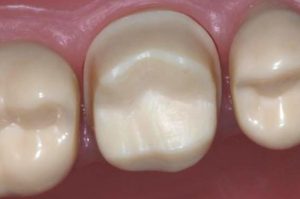
Your dentist will remove any tooth decay or fracture during the crown preparation process
Crown Delivery
You will receive your final crown once it's ready. Some dentists make their own crowns using a CAD/CAM milling machine in-house. Others send their crowns out to a local laboratory and will deliver the crown within a week or two. Either way, the crown delivery appointment is much easier as there are no needles involved. Your dentist will try the new crown to ensure that it's a good fit. They will take one or more X-rays to verify that the crown is seated properly. Your dentist will check your bite relationship, evaluate the tooth contact, and make sure that you can floss comfortably on your new crown. Everything has to check out okay and you and your dentist must be satisfied with the look and fit of the new crown. If so, then your dentist will cement the crown using special glue. The crown procedure is now complete and you have your new tooth in place. Be sure to follow your dentist's instructions and avoid eating on the tooth until the cement has set within a few hours.
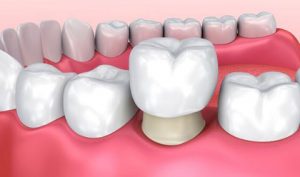
Your crown is cemented with permanent glue to lock it in place indefinitely
